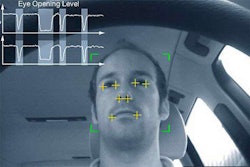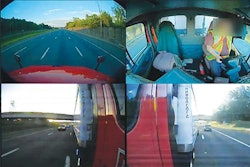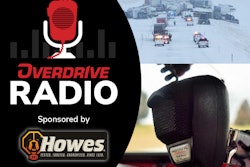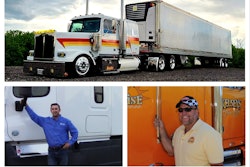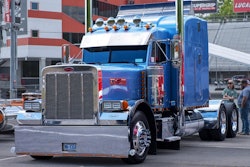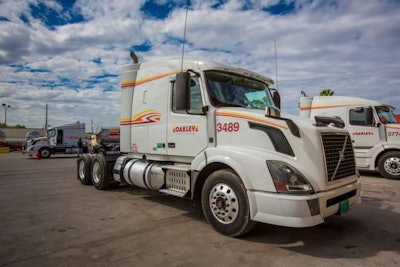 Photo by Steven Diaz courtesy of SmartDrive
Photo by Steven Diaz courtesy of SmartDriveWriting in Overdrive sister publication CCJ, Aaron Huff provides a wealth of context around Florida-based Oakley Transport’s move toward video event recorders and other advanced driver-assist (ADAS) technology, not without its challenges for the company’s drivers. While such multi-camera systems are often touted for their safety- and driver-exoneration (in the event of an accident) capabilities, Oakley’s use has resulted in a new monthly per-mile pay bonus for a majority of the fleet’s drivers.
From Huff’s introduction piece in the five-part series:
The technology rollout started in July amid tensions with some drivers. A SmartDrive camera, mounted on the windshield, had a green power-on indicator light that was fueling suspicions.
“They thought we were watching them 24/7,” [Oakley Operations VP Craig] Stevens says.
In October, management considered stalling the rollout until “we knew exactly what it was going to do for turnover and the risk of losing key driver employees.”
Stevens then witnessed a 4 a.m. lane departure caught on video that eventuated in food-grade tank hauler Oakley Transport’s safety department intervening with a driver and providing “the driver treatment for a previously undiagnosed sleep apnea,” Huff writes:

This was a moment of truth for Stevens. He called an emergency meeting with driver managers to give “a very affirmative message that this product is going to go in our trucks.”
“I am not going to listen to any negative feedback from anybody,” he told the managers. “I am convinced this technology is going to make the company safe and save lives.”
The technology underpinning the system Oakley was testing at the time and ultimately adopted is based on the SmartDrive company’s video-event recorder technology. The company is now making available its next-generation SR4 platform, like the previous SR3 an integration hub that connects to multiple cameras, electronic control units (ECUs), sensors, and various OEM and third-party ADAS in vehicles.
As streaming video and sensor data enter the hubs, software algorithms instantly detect patterns of risky behaviors. These patterns, known as trigger events, initiate the capture of video and event data for review.
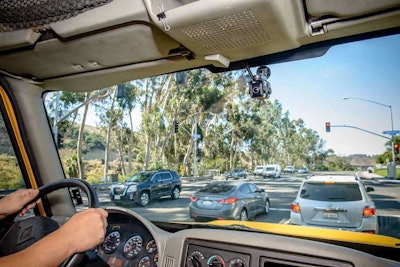 The new SR4 central dual-camera set up (shown in the center high on the windwhield) and multicamera-capable platform uses smaller in-cab cameras than prior generations of the tech, with a more flexible footprint. Photo courtesy of SmartDrive
The new SR4 central dual-camera set up (shown in the center high on the windwhield) and multicamera-capable platform uses smaller in-cab cameras than prior generations of the tech, with a more flexible footprint. Photo courtesy of SmartDriveWith the hubs in trucks fleetwide, Oakley Transport has since implemented an incentive-based pay system drivers based on safety-scoring built into the SmartDrive platform, detailed in this piece of Huff’s reporting.
Drivers who have an average safety score of between 99 and 50 qualify to receive an extra $0.03 per mile. Drivers that score between 49 and 0 will earn an extra $0.05 for all miles traveled in a month.
Oakley Transport’s base pay is between $0.50 and $0.55 per mile depending on a drivers’ previous work experience. Drivers get annual raises for tenure. A driver earning $0.60 per mile, for example, will earn between $80,000 and $100,000 a year, if not more, says Craig Stevens, vice president of operations and strategic initiatives.
Based on driver scores for the first seven months using SmartDrive, Ty Sherman, chief financial officer, anticipates 75 percent of drivers qualify for the $0.03 or $0.05 per-mile bonus.
At 100,000 miles a year, a top-performing Oakley driver would make an extra $5,000. The most productive drivers who run 160,000 miles a year can make an extra $8,000, Stevens says.



